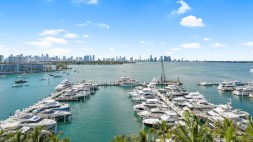Exploring the Vibrant Culture and History of São Paulo
São Paulo, the bustling metropolis of Brazil, is not only the largest city in South America but also a cultural and historical hub. With its vibrant atmosphere, diverse population, and rich heritage, São Paulo offers a unique experience to visitors from around the world. From its impressive museums to its lively festivals, let’s delve into the captivating culture and history of this remarkable city.
A Melting Pot of Cultures
São Paulo is often referred to as a melting pot due to its diverse population. People from all over Brazil and various parts of the world have made this city their home, bringing with them their distinct traditions and customs. This fusion of cultures has contributed to São Paulo’s unique identity.
One notable aspect of São Paulo’s cultural diversity is its cuisine. The city boasts an array of international restaurants offering flavors from around the globe. Whether you’re craving Italian pasta or Lebanese kebabs, São Paulo has it all. Additionally, you can explore traditional Brazilian dishes like feijoada (a black bean stew) or coxinha (a popular snack made with shredded chicken).
Apart from its culinary scene, São Paulo is also home to numerous cultural institutions that showcase different art forms. The Municipal Theater, for instance, hosts opera performances and ballet shows throughout the year. The Pinacoteca do Estado de São Paulo houses an extensive collection of Brazilian art spanning several centuries.
Historical Heritage
As one of Brazil’s oldest cities, São Paulo has a rich historical heritage that dates back centuries. Founded in 1554 by Jesuit missionaries, it started as a small outpost but quickly grew into an important trading center during the colonial era.
To get a glimpse into the city’s past, visit the historic downtown area known as “Centro.” Here you’ll find iconic landmarks such as Pátio do Colégio, which marks the spot where São Paulo was founded. The São Paulo Cathedral, with its stunning neo-Gothic architecture, is another must-see attraction in the area.
For a deeper understanding of São Paulo’s history, pay a visit to the Museu Paulista. Located in the picturesque Ipiranga Park, this museum showcases exhibits that narrate the city’s journey from its early days to its present state. The museum also houses artifacts related to important events in Brazilian history, including the country’s independence.
Festivals and Celebrations
São Paulo is known for hosting vibrant festivals and celebrations that attract both locals and tourists alike. One of the most famous events is the São Paulo Carnival, which takes place annually before Lent. During this time, the streets come alive with colorful parades, samba music, and extravagant costumes. It’s an experience that immerses you in Brazil’s lively spirit and cultural traditions.
Another significant festival in São Paulo is the Festa Junina (June Festival). Celebrated throughout June, this event commemorates various Catholic saints and features traditional dances like quadrilha and folk music performances. Visitors can indulge in typical treats like pamonha (a corn-based dish) or canjica (sweet corn porridge).
Additionally, São Paulo hosts numerous cultural festivals dedicated to different art forms throughout the year. The International Film Festival of São Paulo attracts filmmakers from around the world, showcasing a diverse range of movies across various genres. The Virada Cultural (Cultural Marathon) is another highlight where music concerts, theater performances, and art exhibitions take place non-stop for 24 hours.
Modern Marvels
While steeped in history and culture, São Paulo also embraces modernity with its impressive architecture and thriving business district. The city skyline is adorned with skyscrapers that reflect Brazil’s economic growth over the years.
A prime example of contemporary architecture in São Paulo is Edifício Italia. This towering building offers panoramic views of the city from its observation deck. Another notable structure is the São Paulo Museum of Art (MASP), which stands out for its striking design featuring a suspended concrete block.
The Avenida Paulista, one of São Paulo’s most famous streets, is a symbol of the city’s progress. Lined with high-rise buildings, shopping malls, and cultural centers, it serves as a hub for business and entertainment. The avenue also hosts various events and parades throughout the year, attracting large crowds.
In conclusion, São Paulo is a vibrant city that seamlessly blends its rich history with modernity. Its diverse culture, historical heritage, lively festivals, and impressive architecture make it an exciting destination for travelers seeking an immersive experience in Brazil. Whether you’re exploring its museums or indulging in its culinary delights, São Paulo will captivate you with its unique charm and energy.
This text was generated using a large language model, and select text has been reviewed and moderated for purposes such as readability.





